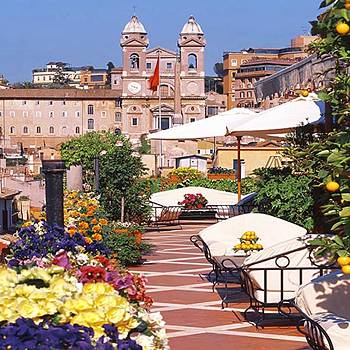Introduction:
The professors of the Department of Art History and of the Master in Environmental Sciences of Geneva University wish to make an emergency appeal for the registration of the village of New Gourna (Egypt). This exceptional masterpiece of contemporary architecture has been known worldwide and belongs to the artistic as well as intellectual heritage of Humanity.
This heritage has already been severely damaged to somewhat general indifference. Every measure should now be rapidly carried out to preserve what is left, restore what has been altered and reconstruct what has disappeared to bring it back to its original form and signification.
Hassan Fathy’s New Gourna village cannot simply disappear in inertia and unconcern. The lessons of know-how/savoir-faire, human solidarity and appropriate technology put in the hands of a poor community are served by an extraordinary formal modern architectural language. They should continue to testify to future generations, as the architect himself would have wished, the possibilities of reasoned development in emergent countries.
The Importance of Hassan Fathy’s works…
His career cannot be limited to this only realisation. Hassan Fathy (1900-1989) is among the most important architects of Africa and the Middle East. As an intellect, writer, humanist, architect and scientist, he deeply influenced generations of architects and engineers throughout the world by his constructions as well as by his thoughts.
Hassan Fathy was born in Alexandria and worked mainly in Egypt except during five years he spent in Greece were he worked in the very cosmopolite Dioxides Agency in Athens (1957-1962). He became internationally famous after the success of the publication of Gourna, a Tale of two Villages in 1969, republished in 1973 under the name of Architecture for the Poor: An Experiment in Rural Egypt. The tremendous impact of the book shook the whole world and had significant repercussions in the western academic circles.
The richness of Hassan Fathy’s anthropological thought, his authentic social concern and the wisdom of his reasoning underlying the architectural experience, have had an international impact which has yet to be assimilated in the era of the sustainable development we are now entering. The notion of “appropriate technology” formulated by Hassan Fathy in the twilight of his life has not been sufficiently acknowledged, in particular in emergent countries.
Hassan Fathy had a prolific mind and was impassioned for numerous subjects. He designed and constructed projects of various natures; from modern constructions in armed concrete in the 1930’s and private residences built with stone to projects of the “Ideal City” for Baghdad and Karachi during his Greek period. He addressed all types of programmes such as villas, farms, mosques, social health centres, schools, theatres, peasant villages and tourist villages. As a true researcher in the field of architecture and construction, he endeavoured himself to develop construction technologies inventing solutions appropriate to the climatic circumstances of hot arid countries. Although the project of NEW GOURNA is one of his important works, his career cannot be limited to this only realisation.
Architect Hassan Fathy was a defender of traditional know-how and art crafts, which were threatened to disappear in favour of industrialized products imported from the West. Ideologically close to the artists of his time, like the group of the “Friends of Art and Life” founded in the 1930’s around the personality of Hamed Saïd, he preferred techniques which required the hand of man, believing they could bring happiness and dignity.
Hassan Fathy whilst being conscious of the importance of educating his compatriots and contemporaries, left numerous works and reports and gave a multitude of conferences. The memos, drafts, booklets scribbled with thoughts, notebooks and sketches are innumerable and constitute the most considerable part of the archive’s collection currently conserved at the American University in Cairo (AUC Rare Books Library) and Special Collections (RBLSC). The classification of this material which is ongoing widens the knowledge of the vast and prolific production of this man. During his life, he never received the recognition and grandstand he deserved, even though in his late years, strangers from all over the world desirous to benefit from his precepts, visited his house in Darb el Labana every day.
Although Hassan Fathy was marginalized in his country, he was related to the international intelligentsias and he dedicated part of his career to expertise in the fields of development, African architecture and heritage. The thousands of photographs conserved at the RBLSC prove that he travelled in numerous countries all over the world in Africa, Asia, the Middle East, Europe and the United-States. As a consultant to international organizations and UN agencies, he elaborated development projects for countries such as Egypt, Iraq, Palestine and Pakistan.
During his travels, he would always closely study the local architecture, whether modern or vernacular, as well as art crafts. These experiences were part of his training as an architect and a theorist. Therefore he often illustrated his conferences and articles with examples of architecture or town-planning he discovered abroad.
The misfortune seems to be fiercely attached to Hassan Fathy’s production as several significant buildings have already disappeared: the Bosphore Casino (1932) commissioned by the Koudsy brothers on the Train Station Square (Bab el-Hadid) in Cairo has fallen, several Deco villas from the 1930’s have been pulled down, the villa he built for his wife, Aziza Hassanein, was destroyed during the creation of the Maadi corniche and the legendary house of the artist and potter Hamed Saïd in el-Marg is now surrounded by a hostile environment. At present, the villa Toussoun Abu Gabal is threatened by the land-bank implemented in the surroundings of the new Four Seasons Hotel. Recently, two houses built in the village of New Bariz (Kharga) have suffered renovations which totally altered them.
Hassan Fathy, along with contemporary figures such as Naguib Mahfouz, Um Kalthoum or Yussef Shahin, incarnates the Egyptian genius. Nowadays, who would even think of letting the Trilogy of Mahfouz, Um Kalthoum’s songs or the cinematographic heritage of Yussef Shahin disappear? Meanwhile, because of quasi-general inactivity and fatalism, the outstanding executions of a prominent architect are falling one after the other and NEW GOURNA is gradually vanishing.
New Gourna:
An Outstanding Conception
Hassan Fathy’s owes his international recognition to the publication of Gourna, a Tale of two Villages which recounts the adventure of the construction of the village of NEW GOURNA. The project and execution of this model-village for a poor traditional rural community, at the dawn of the 1950’s, constitutes an experience without precedent in Egypt. If the book narrating this experience still has an international echo today, the village which testifies of this unique and original attempt is in an advanced state of deterioration.
In 1945, The Department of Antiquities and the Director of Excavations assigned Hassan Fathy to execute a new village, upstream of the old village of Gourna, behind the Memnon Colossuses. This pilot-village should relocate the inhabitants of Old Gourna far away from the ‘pharaonic’ sites. The Gourna residents will oppose a strong resistance to this displacement. Recently, more than half a century later, they have been constrained by force to leave their houses in Old Gourna destroyed by bulldozers.
This project addressed to the modest Egyptian peasantry should be put in parallel with the researches of modern European architects of the Interwar: in the domain of social housing for the working-class (Britz or Siemensstadt in Berlin by H. Sharoun, W. Gropius, B. Taut or the Kiefhook housing project in Rotterdam by J.J.P. Oud) and in the field of model villages of the Reconstruction which are starting to be seriously studied (Bousquel in France by Bossu and projects by Thomas Sharp in Great-Britain).
Before projecting anything, Hassan Fathy analyzed the existing situation. Indeed, he tried to improve the sanitary facilities and enhance the living conditions of the Gourna fellahs while preserving their cultural traditions. In order to build a new village that can answer the needs and customs of the inhabitants, he carried out a meticulous ethnographic approach by observing the functioning of Old Gourna. He studied the familial (badana) and social structure of the clans or tribes and the way of life of the ‘Gournis’. These observations will dictated the village-planning principles.
Hassan Fathy also analysed the lucrative activities of the Gournis: in addition to land cultivation which provides them with insufficient resources, are the licit incomes from art crafts and the illicit ones from fraudulent antiquity commerce. This fact will favour his idea of promoting a large variety of art crafts in the new village by perpetrating existing local traditions and reintroducing ancestral know-how.
In his search for low cost constructive solutions, Hassan Fathy used the technology of raw earth which he had already successfully experimented with in many circumstances. The material is costless and requires a technique that the Nubians still master. He wished to hand over this knowledge to the Gournis to enable them to build their own houses themselves without the need of an architect. This self-help system would guaranty the durability of the village because it could develop itself in a sustainable way without an architect or professional masons for which the Gournis did not have the means. This pilot-project was to serve as a model for the construction of other low cost villages in the poor rural areas of Egypt.
An Exceptional Execution
The site of Gourna is located on the western bank of the Nile at the level of Luxor with which it constitutes Ancient Thebes. The western bank bears the pharaoh’s necropolises (the Valley of the Kings, the Valley of the Queens and the Tombs of the Nobles), which number among the most visited sites of Egypt. As from the eighteenth century, inhabitations have been built close by the tombs. This is what we call the Old Gourna that has just been evacuated and demolished since December 2006 despite international protests.
Hassan Fathy was to design the project on a flat parcel in a 50-acre hosh of farmable land, bought from Boulos Hanna Pasha, protected by dykes and situated close to the main road and the railway. It is on that peace of land that he freely designed the project of a pilot village to relocate 7000 Gournis. Between 1946 and 1949 he accomplished only a part of the designed plan. The work was suspended for lack of political support.
This village resembles neither the traditional villages nor the attempts to design modern Egyptian villages. It can be qualified as an ideal village in as much as the Saline de Chaux by Claude-Nicolas Ledoux was an industrial ideal town at the end of the Enlightenment. Hassan Fathy built Gourna in accordance with his (high) idea of what should be an Egyptian village at the in the midst of the twentieth century. The richness of the profoundly humanist programme of New Gourna constitutes a Unicom in the history of village-planning. It resulted to a very ambitious project, maybe too ambitious for its time and place.
The fellah was to be lodged with his family and animals in a house designed according to his own needs. He would breed his stock, cultivate the land in the surroundings of the village and also produce art crafts (weaving, pottery etc.) in the crafts school and the khan. He would sell the harvest of his farming in a nice shaded market and his art crafts products in a hall built for this purpose. He would practise his religion either in a Mosque with pure lines or in a church (which was not constructed). He would dispose of a meeting place for celebrations and feasts. His children would be sent to two distinct schools, one for the girls and the other for the boys. He would participate in the popular folkloric entertainments taking place in the theatre or on the esplanade situated just behind it. Part of the constructions (mosque, theatre, khan, market etc.) still exists today and does not appear as over dimensioned, considering the fact that Fathy was planning a possible population growth of 20.000 inhabitants.
Hassan Fathy was to design the project on a flat parcel in a 50-acre hosh of farmable land, bought from Boulos Hanna Pasha, protected by dykes and situated close to the main road and the railway. It is on that peace of land that he freely designed the project of a pilot village to relocate 7000 Gournis. Between 1946 and 1949 he accomplished only a part of the designed plan. The work was suspended for lack of political support.
This village resembles neither the traditional villages nor the attempts to design modern Egyptian villages. It can be qualified as an ideal village in as much as the Saline de Chaux by Claude-Nicolas Ledoux was an industrial ideal town at the end of the Enlightenment. Hassan Fathy built Gourna in accordance with his (high) idea of what should be an Egyptian village at the in the midst of the twentieth century. The richness of the profoundly humanist programme of New Gourna constitutes a Unicom in the history of village-planning. It resulted to a very ambitious project, maybe too ambitious for its time and place.
The fellah was to be lodged with his family and animals in a house designed according to his own needs. He would breed his stock, cultivate the land in the surroundings of the village and also produce art crafts (weaving, pottery etc.) in the crafts school and the khan. He would sell the harvest of his farming in a nice shaded market and his art crafts products in a hall built for this purpose. He would practise his religion either in a Mosque with pure lines or in a church (which was not constructed). He would dispose of a meeting place for celebrations and feasts. His children would be sent to two distinct schools, one for the girls and the other for the boys. He would participate in the popular folkloric entertainments taking place in the theatre or on the esplanade situated just behind it. Part of the constructions (mosque, theatre, khan, market etc.) still exists today and does not appear as over dimensioned, considering the fact that Fathy was planning a possible population growth of 20,000 inhabitants.
Hassan Fathy was to design the project on a flat parcel in a 50-acre hosh of farmable land, bought from Boulos Hanna Pasha, protected by dykes and situated close to the main road and the railway. It is on that peace of land that he freely designed the project of a pilot village to relocate 7000 Gournis. Between 1946 and 1949 he accomplished only a part of the designed plan. The work was suspended for lack of political support.
This village resembles neither the traditional villages nor the attempts to design modern Egyptian villages. It can be qualified as an ideal village in as much as the Saline de Chaux by Claude-Nicolas Ledoux was an industrial ideal town at the end of the Enlightenment. Hassan Fathy built Gourna in accordance with his (high) idea of what should be an Egyptian village at the in the midst of the twentieth century. The richness of the profoundly humanist programme of New Gourna constitutes a Unicom in the history of village-planning. It resulted to a very ambitious project, maybe too ambitious for its time and place.
The boys’ school (which has been demolished) was situated in the North-West sector of the village.
The design of the village, deliberately irregular, between grid and radio-centric systems, was to develop the imaginary and encourage a rich and varied architecture. The village is divided in four major parts, separated by streets of at least 10m. large, corresponding to the four Gourna tribes.
A system of secondary streets, not exceeding a width of 6m., protects the intimacy of the badanas and dissuades strangers from entering. The inner court houses are assembled in more or less complex sectors open at the angles. This design deliberately avoids any systematic or symmetrical character and repetitions which lead, as says Fathy, “to boring ranges of identical housings that are considered to be what the poor deserve … and are harmful to the human well-being of Man.”
To solve the economic question of the rural village programme, Hassan Fathy used raw brick. This choice is determined by his knowledge of architecture and monuments of upper-Egypt. Indeed, in regions which are poor in wood, one has to imagine other roofing systems. The vaults and cupolas in raw brick like the Ramasseum, Bagawat and the Fatimid mausoleums, will served him as models to roof his first experimental farms and the houses in New Gourna.
During every epoch, the elementary technology of mud brick has been a traditional material in Egypt, particularly in rural areas. The material itself, at immediate disposal, and the fabrication of the raw bricks, dried in the sun, is simple and low-cost. By applying the system of catenary vaults which he improves, one can build a house entirely in earth. The building of such a house requires only two persons.
This innovative formal language of Hassan Fathy at the time of its creation will have a long posterity in Egypt and around the Mediterranean. Today, in Egypt, one commonly uses the term of “Hassan Fathy style” even if it does not design raw earth constructions but designs any architecture using vaults and domes. Numerous tourist settlements and holiday houses reveal this general gusto.
Exceptional character and uniqueness of New Gourna
In the aftermath of the Second World War, the idea and the execution of the village of New Gourna constitute an experience without precedent. It is both unique in its time and premonitory of the preoccupations that were to come. The idea of a self-help system among the peasants so they can build their own houses adapted to the climate with a simple and low-cost technology is an exception. Hassan Fathy was sensible to the question of social housing as an architect and as a man and sincerely wished to enhance the living condition of the peasants. He invented a model housing plan, based upon constructive and typological models from the historical range of Egyptian constructions. This concern for re-linking with the lost traditional know-how embraces the theories underlying the question of sustainable development.
Because of the extreme abundance of heritage from all epochs, Egypt is essentially preoccupied by antiquities, Islamic and Coptic arts and does not yet recognise the more recent heritage; this is why the concern for the village of New Gourna has not been considered as a priority. Nevertheless, it constitutes an exceptional cultural conception and heritage.
The New Gourna, Hassan Fathy’s pilot project, which has been partially constructed, is at present abandoned and in peril. Even though the theatre and the mosque have been restored and are in a good state of conservation, some of the buildings suffer from lack of maintenance and savage transformations. Other buildings, like the boys’ school and the art crafts hall of the village, have been purely and simply destroyed.
Consequently…
The professors of the Department of Art History and of Masters in Environmental Sciences of Geneva University in Geneva, take the initiative to demand for an international registration of the New Gourna as a “Listed Heritage.”
H.N.





























































































































